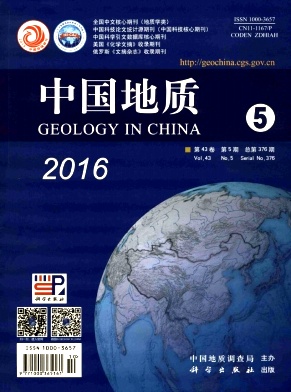FANG Gui-cong, CHEN Yu-chuan, CHEN Zheng-hui, ZENG Zai-lin, LIU Cui-hui, TONG Qi-quan, SUN Jie, ZHU Guo-hua. Petrology and geochemistry of granite in the Pangushan tungsten deposit, south Jiangxi Province[J]. Geology in China, 2016, (5): 1558-1568. doi: 10.12029/gc20160506
| Citation: |
FANG Gui-cong, CHEN Yu-chuan, CHEN Zheng-hui, ZENG Zai-lin, LIU Cui-hui, TONG Qi-quan, SUN Jie, ZHU Guo-hua. Petrology and geochemistry of granite in the Pangushan tungsten deposit, south Jiangxi Province[J]. Geology in China, 2016, (5): 1558-1568. doi: 10.12029/gc20160506
|
Petrology and geochemistry of granite in the Pangushan tungsten deposit, south Jiangxi Province
-
1.
Guangxi Key Laboratory of Hidden Metallic Ore Deposits Exploration, College of Earth Science, Guilin University of Technology, Guilin 541004, Guangxi, China
-
2.
Chinese Academy of Geological Sciences, Beijing 100037, China
-
3.
Institute of Mineral Resources, Chinese Academy of Geological Sciences, Beijing 100037, China
-
4.
Gannan Geological Survey Party, Jiangxi Bureau of Exploration & Development of Geology & Mineral Resources, Ganzhou 341000, Jiangxi, China
-
5.
Jiangxi Pangushan Tungsten Co., Ltd., Yudu 342311, Jiangxi, China
-
Abstract
Pangushan granite is genetically related to the well-known Pangushan large-sized tungsten deposit. However, due to great depth, its petrologic and geochemical data had been lacking until it was discovered by the Nanling Scientific Drilling Project (SP-NLSD-2) recently. In this paper, the petrologic and geochemical study conducted by the authors is reported. The granite is found to be ultra-acidic, alkali-rich, Na-poor, K-rich, meta- to weak-peraluminous and K-high calc-alkaline. Its corresponding granitic magma is highly evolved and W and Bi values are significantly higher than their average values in Yanshanian granite in Nanling region, indicating that they were the major ore-forming material source. When the granitic magma was evolved to the greisenization stage, Mo, Bi, Cu, Pb and REE were enriched, while W and Sn were depleted because of their migration into the hydrothermal solution. The intrusion of the Pangushan granite happened during intraplate extension.
-

-
-
Access History







 DownLoad:
DownLoad: